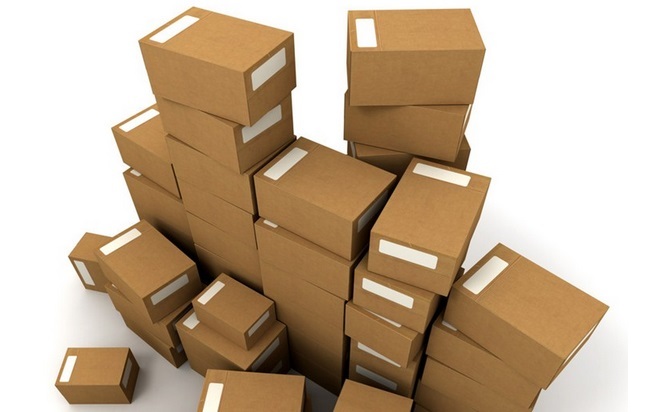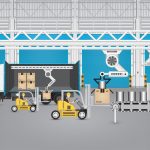UAE Cross-Border E-Commerce Logistics
Cross-border e-commerce refers to an international business activity in which transaction entities belonging to different environments complete transactions and settle payments through e-commerce platforms, and deliver goods and complete transactions through cross-border logistics.
The development of economic globalization has made the business exchanges between countries more frequent. The export of superior products overseas and the import of required products by all countries in the world have become an important measure to promote their own economic and social development. As my country’s economic development enters the era of a new normal, cross-border e-commerce logistics, as a new bright spot in national economic growth, has attracted the attention of the country and the industry.
(E-mail us at info@bestplusgroup.com to Get a Quote)
However, with the rapid development of cross-border e-commerce, high logistics costs, slow distribution speed, and low service levels have become problems that need to be resolved in the process of developing e-commerce. Different from domestic logistics, cross-border logistics has long distances, long time, and high cost. Not only that, it also involves customs clearance (handling customs clearance procedures) and other related issues in the destination country.
Currently, the main cross-border e-commerce logistics has four export channels: commercial express delivery, postal parcel, dedicated line logistics and overseas warehouses. Among them, 70% of cross-border e-commerce parcels are delivered through the postal system, and postal accounts for about 50%.
The advantages and disadvantages of various cross-border e-commerce logistics models:
International Commercial Express
After TNT was acquired by FedEx, there were three remaining major international commercial express companies: UPS, FedEx, and DHL. UPS and FedEx are headquartered in the United States, and their main advantages are in Europe and the United States. DHL is headquartered in Germany and is a global express delivery company with more business advantages. The main characteristics of international commercial express are: timeliness is guaranteed, packet loss rate is low, tracking information is punctual, but imitation brand, battery-containing, and special products cannot be delivered basically, and the logistics cost is high. If export customs clearance is involved, The e-commerce company needs to have “importer” qualifications abroad. In addition, the service model of international commercial express is door-to-door, which is more suitable for B2C cross-border e-commerce to sell some products with high prices, high profits and small size.
(E-mail us at info@bestplusgroup.com to Get a Quote)
Postal logistics
Thanks to the Universal Postal Union and the Kahala Post Organization (KPG), the postal network basically covers the world, which is wider than any other cross-border e-commerce logistics method. In addition to China Post, other postal services used by Chinese sellers include Hongkong Post and Singapore Post. Postal logistics can also be called postal parcels. Thanks to the Universal Postal Union and the Kahala Post Organization (KPG), the postal network basically covers the world. Any other cross-border e-commerce logistics methods must be extensive. In addition to the wide range of postal advantages, the low price is also a major feature. However, problems such as long effectiveness, poor tracking and query capabilities, and lack of service levels are also obvious. Basically, the difference between cross-border e-commerce foreign post and international commercial express is the same as domestic The difference between SF Express and Post. Therefore, postal logistics is more suitable for express delivery with small product volume, small selling price and profit margin, low service requirements, and low timeliness requirements.
Dedicated logistics
Also known as cargo dedicated line, cross-border dedicated line logistics generally transport goods abroad by sea, air charter, etc., and then deliver goods to the destination country through partner companies. This model has evolved from the traditional logistics model and is suitable for B2B cross-border e-commerce companies who are now making a fortune. However, the model of mass shipment involves overseas customs clearance, and merchants cannot complete the customs clearance of the destination country. In general, delivery, overseas warehouses, customs declaration, ocean/air transportation, destination country customs clearance, overseas distribution, etc. need to be handed over to the logistics company for unified services, but it is because of the cumbersome links that make it a market like Tospino The B2B cross-border e-commerce platform that also takes over logistics shows its advantages.
(E-mail us at info@bestplusgroup.com to Get a Quote)
Overseas warehouse
The overseas warehouse model is actually a bit similar to the dedicated line logistics model, which refers to one-stop control and management services for sellers to carry out cargo storage, sorting, packaging and delivery at the sales destination. The difference is that overseas warehouse merchants stock up unsold goods to overseas warehouses in advance, and then wait for customers to place orders on third-party cross-border e-commerce platforms, and then ship them from overseas warehouses. This model is suitable for B2C best sellers. Sales are also suitable for a large number of B2B rigid needs sales. The specific operation is roughly that Chinese sellers transport goods to overseas storage centers for storage by shipping, air, or express transportation, and issue operating instructions through the inventory management system of the logistics carrier.
Cross-border e-commerce logistics problems and solutions
The problems of cross-border e-commerce logistics are mainly focused on timeliness and cost issues, which directly lead to the difficulty of return and exchange of cross-border e-commerce and poor user experience. At present, the main logistics form of cross-border e-commerce exports is postal parcels. Some e-commerce companies are more mature. Areas where users have high requirements for commodity logistics use commercial express delivery. However, these two forms of express delivery are either too long and affect User consumption experience is either high cost, which directly accounts for 20%-30% of the total cost, which invisibly hinders the development of cross-border e-commerce to a large extent.
At present, the main method to solve cross-border logistics problems is to adopt the overseas warehouse model, which improves the arrival time of users’ purchases through local delivery through overseas warehouses, and directly optimizes their shopping experience. It takes at least 15-30 days for a package to be shipped in China, but if you use overseas warehouses, you can ship directly from the local area, then the time can be shortened to about 7 days. Like Tospino, it is directly delivered by its own delivery team, and most of the surrounding areas The city only needs 0.5 to 15 hours. Some large enterprises can also adopt the method of self-built overseas warehouses, but the premise is that they can ignore the cost and have the corresponding overseas talent recruitment and management capabilities.
(E-mail us at info@bestplusgroup.com to Get a Quote)
Unique
We can do what you can not do
Knowledge
We know about your product
Efficiency
We work fast and efficiently
Easy Communication
You can contact us at any time 24/24 – 365/365
Professional
A job well done is the most important thing for us
Website: www.bestplusgroup.com
Email: info@bestplusgroup.com

 Previous Post
Previous Post Next Post
Next Post

